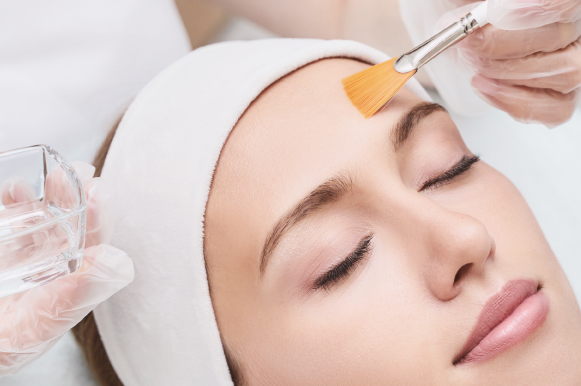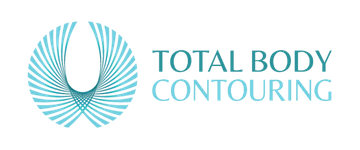Thread Lift vs Traditional Facelift: Which Non-Surgical Option is Right for You?
As we age, our skin naturally loses elasticity and firmness, leading to sagging, fine lines, and wrinkles. While traditional surgical facelifts have long been the gold standard for addressing these concerns, modern aesthetic treatments now offer compelling alternatives. Thread lifts have emerged as a popular non-surgical facelift option, particularly among health-conscious individuals seeking effective facial rejuvenation without the risks and downtime associated with surgery.
If you’re considering facial rejuvenation in Canberra, understanding the differences between thread lifts and traditional facelifts can help you make an informed decision that aligns with your goals, lifestyle, and comfort level.
What is a Thread Lift?
A thread lift is a minimally invasive cosmetic procedure that uses specialised threads, typically made from PDO (polydioxanone), to lift and tighten sagging skin. During the treatment, these biocompatible threads are strategically inserted beneath the skin using fine needles or cannulas. The threads create an immediate lifting effect while stimulating collagen production for long-term skin improvement.
PDO threads are the same material used in medical sutures and are completely absorbed by the body over time. This non-surgical facelift technique can target various areas, including the cheeks, jowls, neck, and brow area, providing subtle yet noticeable results.
Traditional Facelift: The Surgical Approach
A traditional facelift, or rhytidectomy, is a surgical procedure that involves making incisions around the hairline and ears to access underlying facial tissues. The surgeon then repositions muscles, removes excess skin, and tightens the remaining skin before closing the incisions. This comprehensive approach addresses significant sagging and can provide dramatic, long-lasting results.
However, traditional facelifts require general anaesthesia, significant downtime, and carry the inherent risks associated with any surgical procedure.
Comparing Thread Lifts and Traditional Facelifts
Recovery Time and Downtime
One of the most significant advantages of thread lifts is the minimal downtime required. Most patients can return to their normal activities within 24-48 hours, with only minor swelling and bruising that typically resolves within a week. You might experience some mild discomfort or tightness, but this is generally manageable with over-the-counter pain relief.
Traditional facelifts, conversely, require extensive recovery time. Patients typically need 2-3 weeks off work and may experience significant swelling, bruising, and discomfort for several weeks. Full recovery can take several months, during which time you’ll need to avoid strenuous activities and follow strict post-operative care instructions.
Results and Longevity
Thread lifts provide immediate lifting effects, with results continuing to improve over 2-3 months as collagen production increases. The results typically last 12-18 months, though individual experiences may vary based on skin condition, age, and lifestyle factors.
Traditional facelifts offer more dramatic and longer-lasting results, typically lasting 10-15 years. The comprehensive nature of surgical intervention means it can address severe sagging and multiple signs of ageing simultaneously.
Cost Considerations
Thread lifts are generally more affordable than traditional facelifts, making facial rejuvenation accessible to a broader range of individuals. The lower cost, combined with minimal downtime, makes it an attractive option for those seeking improvement without significant financial or time investments.
Traditional facelifts represent a substantial financial commitment, with costs including surgeon fees, anaesthesia, facility fees, and post-operative care.
Safety and Risks
Both procedures carry some risks, but thread lifts are significantly safer due to their minimally invasive nature. Potential side effects include temporary swelling, bruising, and mild discomfort. Serious complications are rare when performed by qualified practitioners.
Traditional facelifts carry surgical risks including infection, bleeding, nerve damage, and complications from anaesthesia. While these risks are relatively low when performed by experienced surgeons, they’re important considerations.
Why Canberra Clients Choose Non-Surgical Facial Rejuvenation

Canberra residents increasingly favour thread lifts and other non-surgical options for several compelling reasons:
Lifestyle Compatibility: Many Canberrans lead active, professional lives that don’t accommodate extended recovery periods. Thread lifts allow them to maintain their routines while achieving aesthetic improvements.
Natural-Looking Results: Today’s patients often prefer subtle enhancements that look natural rather than dramatic surgical changes. Thread lifts provide gentle lifting that enhances natural beauty without appearing “overdone.”
Gradual Improvement: The progressive nature of thread lift results appeals to those who prefer gradual changes that won’t attract unwanted attention or speculation from colleagues and friends.
Lower Risk Profile: Health-conscious individuals appreciate the reduced risk associated with non-surgical procedures, particularly when they’re already maintaining their health through diet, exercise, and proper skincare.
Flexibility: Thread lifts can be combined with other non-surgical treatments like dermal fillers, anti-wrinkle injections, and skin rejuvenation procedures for comprehensive facial enhancement.
Related: HydraFacial Syndeo vs. Traditional Facials: What Makes It Unique
Who is a Good Candidate for Thread Lifts?
Thread lifts work best for individuals with mild to moderate skin laxity who want to address early signs of ageing. Ideal candidates typically:
- Are aged 30-65 years
- Have good skin elasticity
- Are in good overall health
- Have realistic expectations about results
- Want to avoid surgical procedures
- Can commit to proper aftercare
Those with severe sagging or significant skin excess may be better suited to traditional surgical options.
The Treatment Process
A thread lift procedure typically takes 30-60 minutes, depending on the areas being treated. After cleansing and numbing the treatment area, your practitioner will strategically insert the PDO threads using fine needles or cannulas. The threads are then gently adjusted to achieve the desired lift before being secured in place.
Most patients experience only mild discomfort during the procedure, describing it as similar to having injections. The immediate results are visible, though some initial swelling may mask the final outcome.
Aftercare and Maintenance
Following your thread lift, you’ll receive detailed aftercare instructions to optimise your results. These typically include:
- Avoiding strenuous exercise for 1-2 weeks
- Sleeping with your head elevated for several days
- Avoiding excessive facial movements for the first few days
- Using gentle skincare products
- Attending follow-up appointments
To maintain your results, many clients opt for touch-up treatments every 12-18 months, often combining them with other non-surgical procedures for comprehensive facial rejuvenation.
Making the Right Choice for You
Deciding between a thread lift and traditional facelift depends on your individual circumstances, goals, and preferences. Consider factors such as:
- The degree of skin laxity you want to address
- Your available downtime
- Your risk tolerance
- Your budget
- Your desired level of improvement
- Your long-term aesthetic goals
Consulting with experienced practitioners who can assess your unique situation and discuss all available options is essential for making an informed decision.
Related: The Power of Light: How Lumixa Rejuvenates Your Skin Without Surgery
Final Advice
Thread lifts represent an excellent middle ground between topical treatments and surgical procedures, offering meaningful results with minimal downtime and risk. For Canberra residents seeking facial rejuvenation that fits their active lifestyles, thread lifts provide an appealing alternative to traditional surgery.
While traditional facelifts remain the best option for addressing severe ageing concerns, thread lifts excel at providing natural-looking improvements for those with mild to moderate skin laxity. The key is choosing the right treatment for your specific needs and working with qualified practitioners who can guide you toward the best outcome.
Ready to explore your facial rejuvenation options? At Total Body Contouring, we specialise in advanced non-surgical treatments including thread lifts, helping Canberra clients achieve their aesthetic goals safely and effectively. Our experienced team takes a personalised approach to each treatment, ensuring you receive the best possible results tailored to your unique needs and lifestyle.
Book a personalised skin consult today to discover how thread lifts and other minimally invasive treatments can help you achieve natural-looking facial rejuvenation without the downtime of surgery. Contact Total Body Contouring to begin your journey toward refreshed, youthful-looking skin.
BOOK A FREE CONSULT TO GET STARTED.

